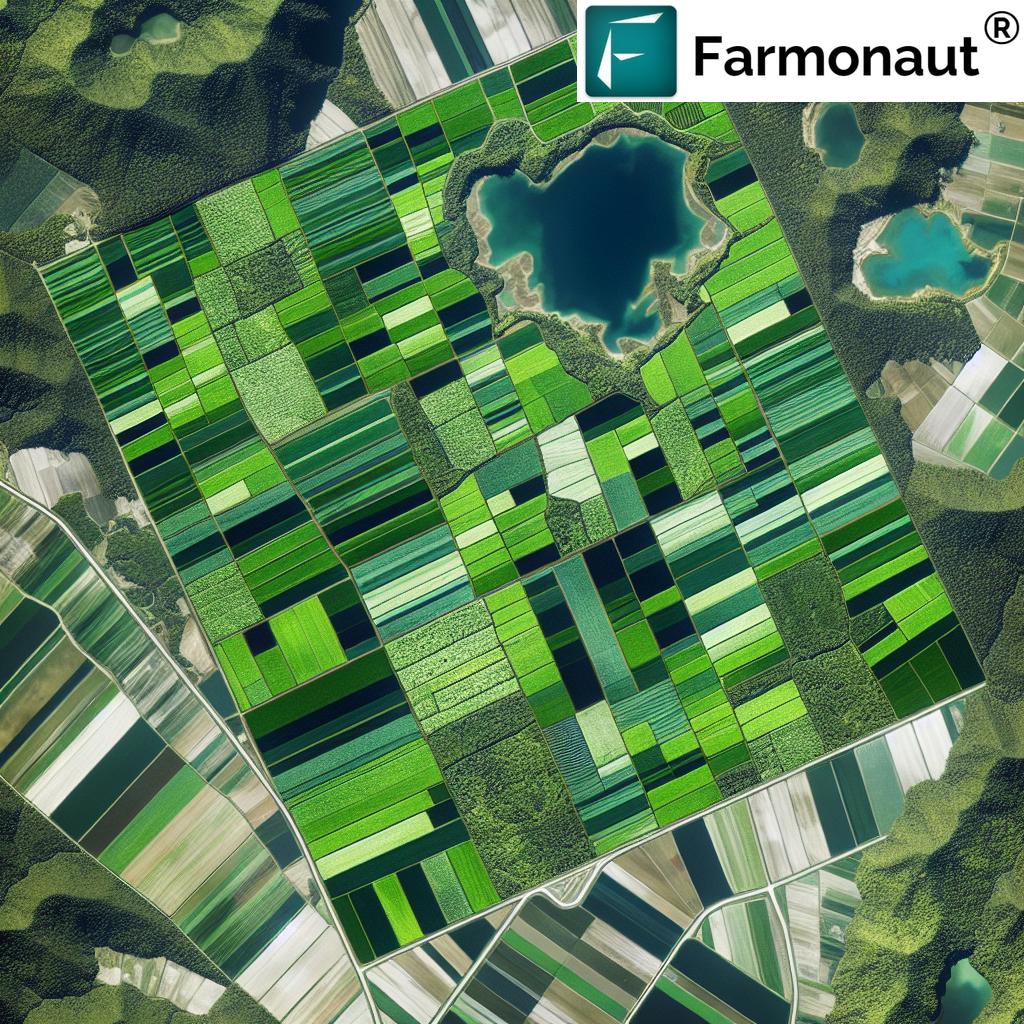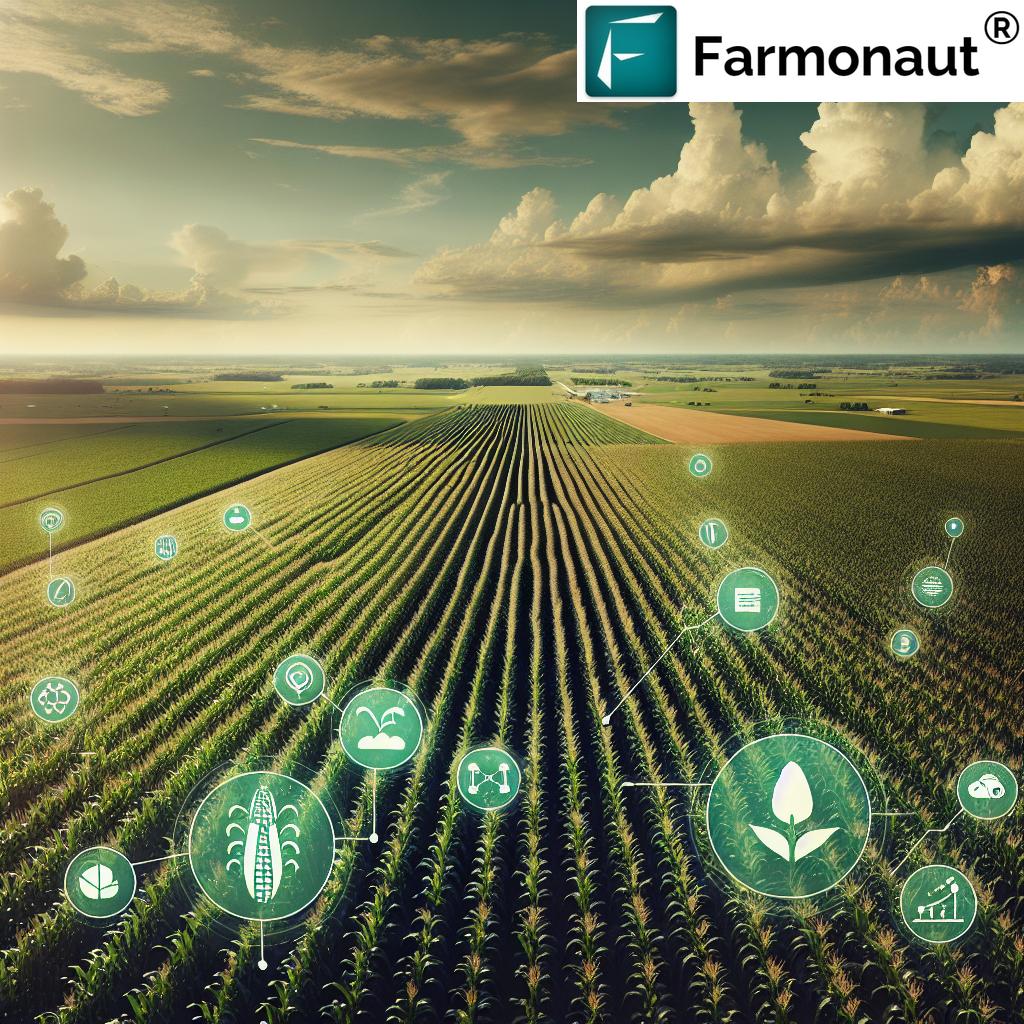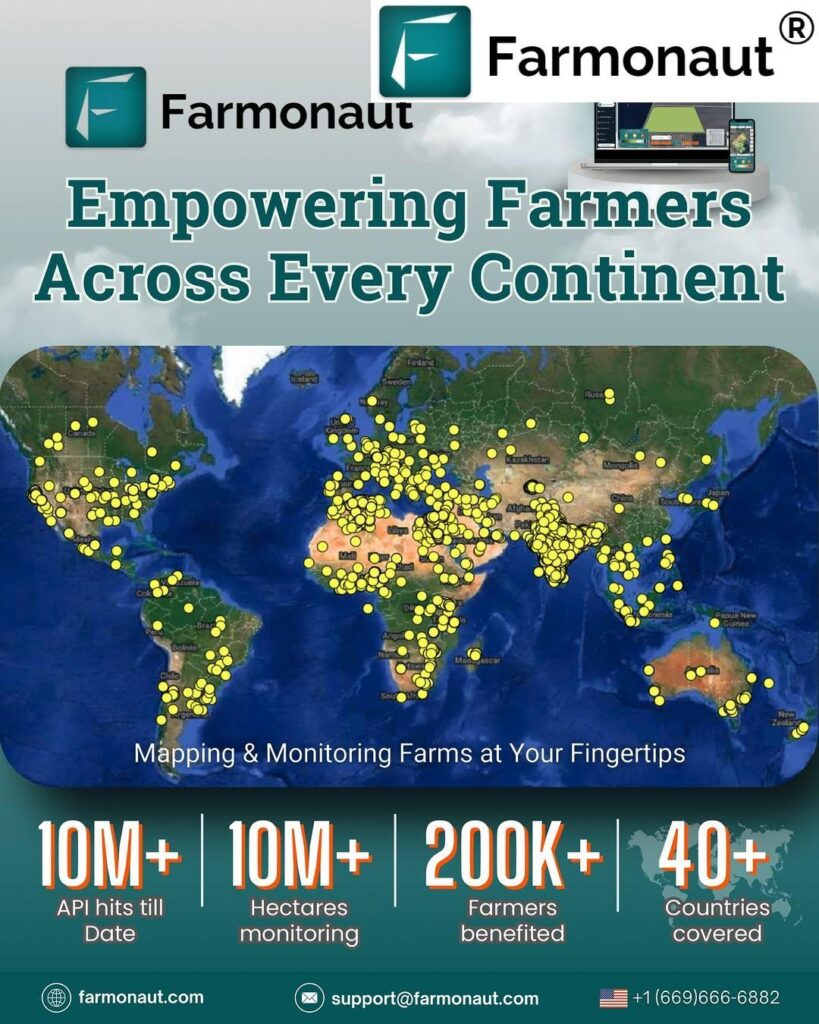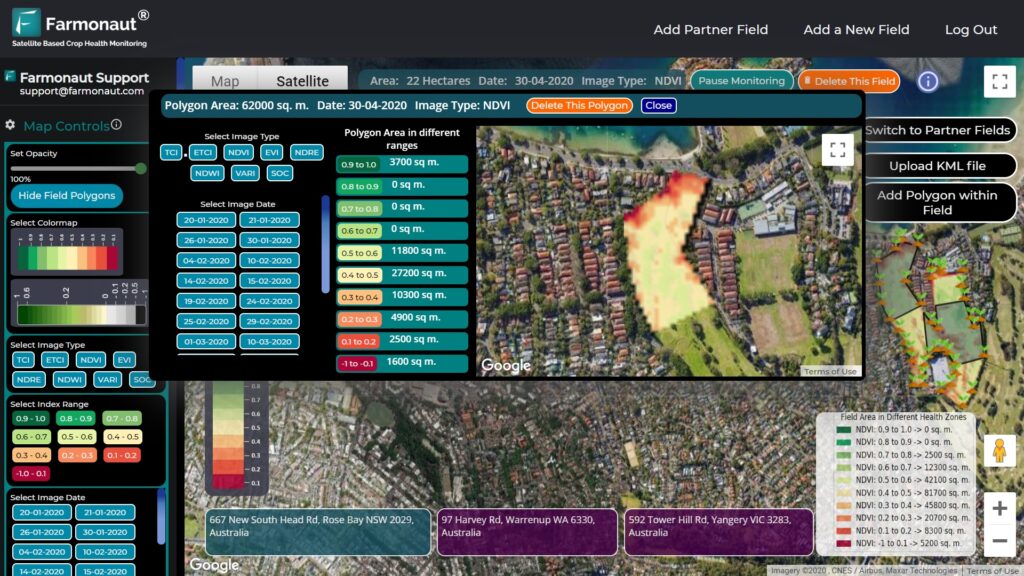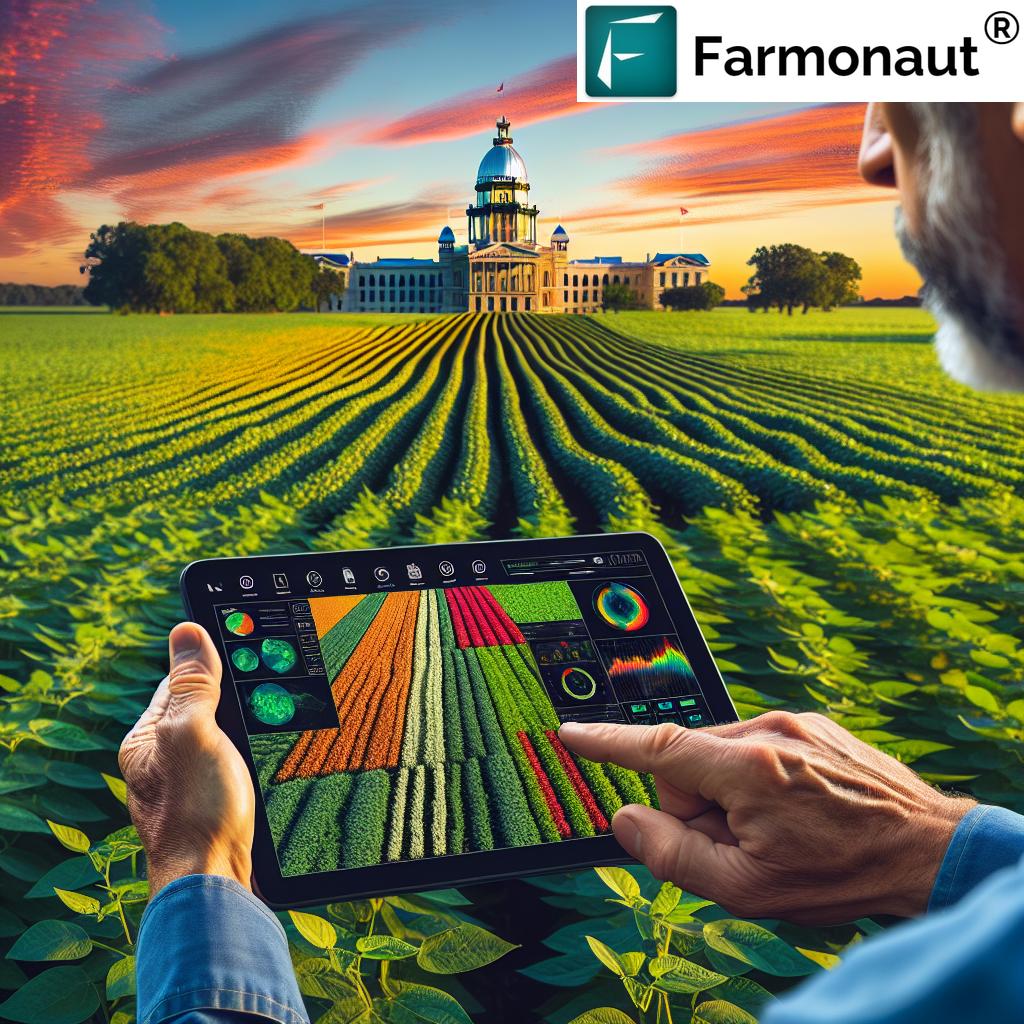Maryland’s Hidden Gem: How the American Persimmon Could Become the Official State Fruit and Boost Local Agriculture
“Maryland’s Senate Bill 378 proposes the American persimmon as the state fruit, advancing from a school project to legislative action.”
In the heart of the Old Line State, a fascinating story is unfolding that could change the face of Maryland’s agricultural landscape and cultural identity. We’re witnessing a remarkable journey that began with a young student’s curiosity and has now blossomed into a statewide initiative. The American persimmon, a fruit deeply rooted in Maryland’s soil and history, is on the cusp of becoming the official state fruit. This development not only highlights the power of civic engagement but also shines a spotlight on the untapped potential of native flora in boosting local agriculture and economy.
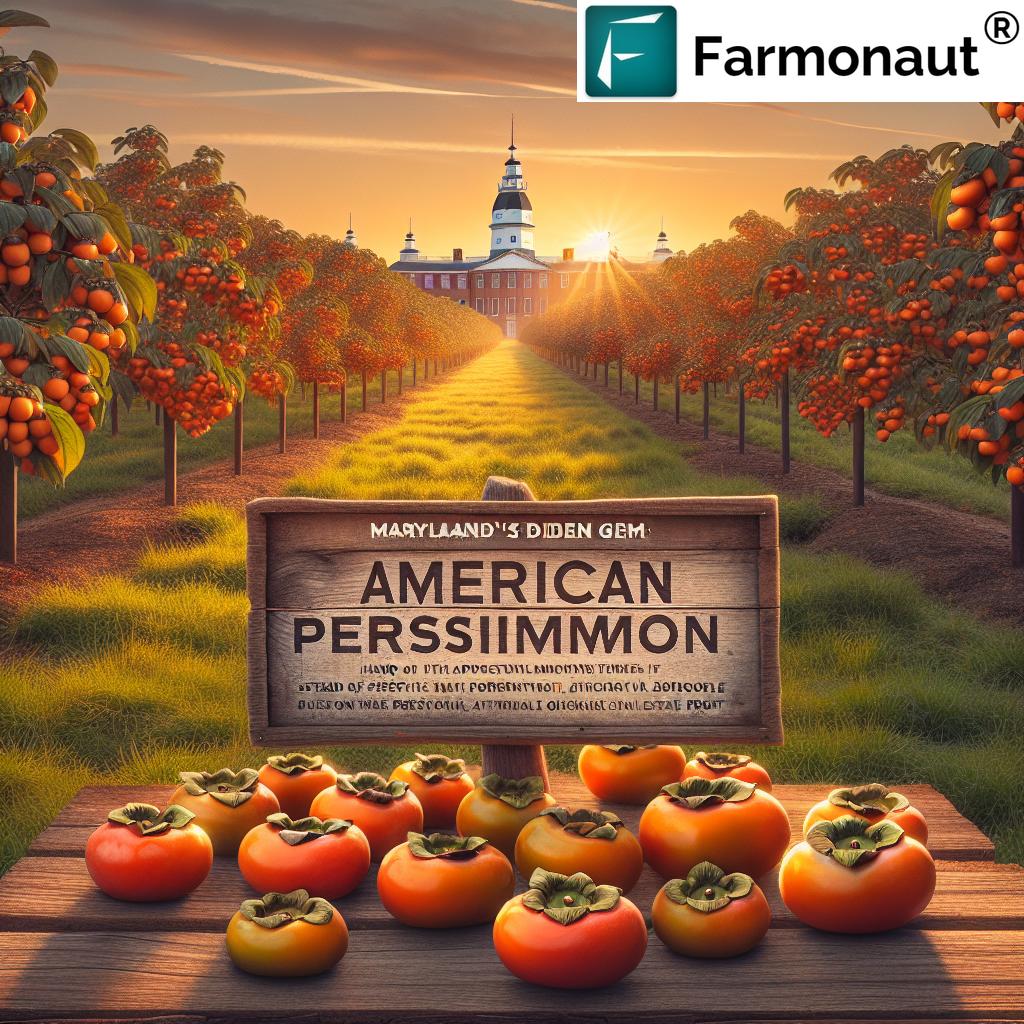
The Genesis of a Statewide Movement
Our story begins in Charles County, Maryland, where 13-year-old Ada Marciniak embarked on a school project that would soon captivate the entire state. Ada’s research revealed a surprising fact: Maryland, unlike many of its neighboring states, lacked an official state fruit. This discovery sparked a passion in the young student, leading her to delve deeper into Maryland’s rich agricultural heritage.
As Ada explored the native fruits of Maryland, she stumbled upon the American persimmon (Diospyros virginiana), a fruit with a storied past and promising future. Intrigued by its historical significance and potential benefits, Ada decided to champion this overlooked fruit as a candidate for Maryland’s official state fruit.
The American Persimmon: A Fruit with Deep Roots
The American persimmon is not just any fruit; it’s a testament to Maryland’s natural bounty and cultural diversity. Native to the eastern United States, including Maryland, this fruit has been a part of the local ecosystem for millennia. Indigenous cultures have revered the persimmon for its nutritional value and medicinal properties for over 2,000 years.
- Historical Importance: The persimmon played a crucial role in the diets of Native American tribes, who used every part of the tree from fruit to bark.
- Culinary Versatility: The fruit can be eaten fresh, dried, or used in various recipes, from traditional puddings to modern culinary creations.
- Medicinal Applications: Various parts of the persimmon tree have been used in traditional medicine for treating ailments ranging from digestive issues to fever.
In the context of modern agriculture, the American persimmon represents an opportunity for crop diversification and sustainable farming practices. Its hardiness and adaptability to Maryland’s climate make it an excellent candidate for local agriculture initiatives.
From School Project to Senate Bill
Ada Marciniak’s passion for the American persimmon didn’t stop at her school’s boundaries. With the support of her family, she took her research and proposal to the Maryland State Senate. Her compelling presentation caught the attention of Senator Arthur Ellis, a Democrat from Charles County, who was impressed by the young student’s dedication and the potential benefits of recognizing the persimmon as the state fruit.
Inspired by Ada’s initiative, Senator Ellis sponsored Senate Bill 159, which proposes to designate the American persimmon as Maryland’s official state fruit. The bill’s journey through the legislative process has been nothing short of remarkable, garnering support from various quarters and sparking a statewide conversation about local agriculture, cultural heritage, and environmental sustainability.
The Legislative Journey
The path to making the American persimmon Maryland’s state fruit involves several crucial steps in the legislative process:
- Senate Approval: Senate Bill 159 has successfully passed through the Senate, marking a significant milestone in its journey.
- House of Delegates: The bill now moves to the House of Delegates for consideration and voting.
- Committee Hearings: A hearing has been scheduled for April 2, 2025, at 1:30 p.m. in the House, where supporters and experts will testify on the bill’s merits.
- Final Approval: If passed by both chambers, the bill will return to the Senate for final approval before being sent to the governor for signing.
- Implementation: If signed into law, the American persimmon would officially become Maryland’s state fruit on October 1, 2025.
This legislative journey underscores the power of civic engagement and the impact that even young citizens can have on shaping state policy. It’s a testament to Maryland’s democratic process and the state’s openness to innovative ideas that promote local heritage and agriculture.
The Multifaceted Benefits of the American Persimmon
As we delve deeper into the potential impact of designating the American persimmon as Maryland’s state fruit, it’s crucial to understand the wide-ranging benefits this decision could bring to the state. From agricultural advantages to cultural significance, the persimmon offers a unique blend of opportunities for Maryland.
| Category | Benefit | Impact on Maryland | Potential Value |
|---|---|---|---|
| Agricultural | Crop diversification | Introduces a resilient, native crop option for farmers | 10-15% increase in agricultural diversity |
| Local farm income | New revenue stream for Maryland farmers | Potential 5-8% increase in local farm revenues | |
| Economic | Job creation | New opportunities in farming, processing, and tourism | Estimated 500-1000 new jobs in related industries |
| Export potential | Unique product for interstate and international markets | Possible $10-20 million in new exports annually | |
| Environmental | Ecosystem support | Native species that supports local wildlife | Enhanced biodiversity in cultivated areas |
| Wildlife habitat | Food source for various native animal species | Improved ecosystem health and balance | |
| Cultural | Indigenous heritage | Recognition of Native American agricultural traditions | Increased awareness and preservation of cultural practices |
| Traditional recipes | Revival of historical Maryland cuisine | Growth in culinary tourism and local food interest | |
| Health | Nutritional value | High in vitamins and antioxidants | Potential improvement in local diet quality |
| Medicinal properties | Traditional and potential modern medical applications | Increased interest in natural health products |
“The American persimmon, native to Maryland, has over 2,000 years of cultural significance for Indigenous peoples in North America.”
Agricultural Significance
The American persimmon offers significant potential for Maryland’s agricultural sector. As a native species, it is well-adapted to the local climate and soil conditions, making it an ideal crop for sustainable farming practices. Integrating persimmons into Maryland’s agricultural landscape could lead to:
- Crop Diversification: Farmers can reduce risk by adding persimmons to their crop rotation, enhancing farm resilience.
- Sustainable Farming: Being native, persimmons require fewer inputs, aligning with eco-friendly farming practices.
- Extended Growing Season: Persimmons ripen late in the fall, providing farmers with a valuable late-season crop.
For farmers looking to diversify their crops and adopt sustainable practices, Farmonaut’s crop plantation and forest advisory services can provide valuable insights. These services use satellite data and AI to offer personalized recommendations for optimal crop management, including for specialty crops like persimmons.
Economic Potential
Designating the American persimmon as Maryland’s state fruit could unlock significant economic opportunities:
- New Market Creation: A growing interest in native and unique fruits could create a niche market for Maryland persimmons.
- Value-Added Products: From persimmon jams to craft beers, the fruit opens doors for innovative local products.
- Agritourism: Persimmon orchards and harvest festivals could become new attractions, boosting local tourism.
To capitalize on these economic opportunities, farmers and agribusinesses can leverage Farmonaut’s large-scale farm management solutions. These tools can help optimize operations, from planting to harvest, ensuring maximum yield and quality for persimmon crops.
Environmental Benefits
The American persimmon tree plays a crucial role in Maryland’s ecosystem:
- Wildlife Support: The fruit provides food for various native animals, including deer, foxes, and birds.
- Soil Conservation: The tree’s deep root system helps prevent soil erosion and improve soil structure.
- Carbon Sequestration: As a long-lived tree species, persimmons contribute to carbon capture and storage.
For those interested in monitoring the environmental impact of persimmon cultivation, Farmonaut’s carbon footprinting tool can be invaluable. This feature allows farmers and businesses to track and manage their carbon emissions, supporting sustainable agricultural practices.
Cultural Significance
The American persimmon holds deep cultural significance for Maryland:
- Indigenous Heritage: Recognizing the persimmon honors the agricultural traditions of Native American tribes in Maryland.
- Historical Connection: The fruit has been part of Maryland’s landscape since colonial times, featuring in historical accounts and traditional recipes.
- Culinary Traditions: Persimmons have been used in various traditional Maryland dishes, offering a unique flavor profile to local cuisine.
As interest in local food heritage grows, Farmonaut’s traceability solutions can help producers authenticate the origin of their persimmons. This blockchain-based technology ensures transparency in the supply chain, allowing consumers to connect with the cultural story behind their food.
Health and Nutritional Benefits
The American persimmon is not just culturally significant; it’s also a nutritional powerhouse:
- Rich in Vitamins: High in vitamins A and C, supporting immune function and skin health.
- Antioxidant Properties: Contains compounds that may help reduce inflammation and oxidative stress.
- Dietary Fiber: Excellent source of fiber, promoting digestive health and satiety.
These health benefits make persimmons an attractive option for health-conscious consumers and could contribute to improving dietary habits in Maryland.
Challenges and Considerations
While the potential benefits of designating the American persimmon as Maryland’s state fruit are numerous, there are challenges to consider:
- Public Awareness: Many Marylanders may be unfamiliar with persimmons, requiring educational initiatives.
- Agricultural Adaptation: Farmers may need support and resources to integrate persimmons into their operations.
- Market Development: Creating a robust market for persimmons and persimmon products will take time and effort.
Addressing these challenges will require collaboration between government agencies, agricultural organizations, and local communities. Farmonaut’s suite of agricultural technology solutions can play a crucial role in supporting farmers through this transition, offering tools for efficient crop management and market analysis.
The Role of Technology in Persimmon Cultivation
As Maryland considers embracing the American persimmon as its state fruit, the role of agricultural technology becomes increasingly important. Advanced farming techniques and digital tools can significantly enhance the cultivation and management of persimmon orchards.
Farmonaut, a leading agricultural technology company, offers a range of solutions that can support Maryland farmers in their persimmon cultivation efforts:
- Satellite-Based Crop Monitoring: Farmonaut’s satellite imagery technology can help farmers track the health and growth of persimmon trees across large areas, enabling early detection of issues like pest infestations or nutrient deficiencies.
- AI-Powered Advisory Systems: The Jeevn AI system can provide personalized recommendations for persimmon cultivation, taking into account factors like soil conditions, weather patterns, and historical data.
- Resource Management Tools: Efficient water and fertilizer use is crucial for sustainable persimmon farming. Farmonaut’s resource management features can help optimize these inputs, reducing waste and improving yield.
By leveraging these technological solutions, Maryland farmers can maximize the potential of persimmon cultivation, ensuring higher yields and better quality fruits while maintaining sustainable practices.
The Path Forward: Implementing the State Fruit Initiative
As Senate Bill 159 progresses through the legislative process, it’s important to consider the steps that would follow its potential passage:
- Educational Campaigns: Raising public awareness about the American persimmon, its benefits, and its cultural significance in Maryland.
- Agricultural Support Programs: Developing initiatives to assist farmers in integrating persimmons into their crop rotations.
- Research and Development: Investing in studies to improve persimmon cultivation techniques and develop new varieties suited to Maryland’s climate.
- Marketing Strategies: Creating promotional campaigns to boost the demand for Maryland-grown persimmons and related products.
- Culinary Integration: Encouraging local chefs and food producers to incorporate persimmons into their offerings, showcasing the fruit’s versatility.
These steps would require collaboration between various stakeholders, including government agencies, agricultural organizations, educational institutions, and local communities.
The Ripple Effect: Beyond Maryland’s Borders
The initiative to make the American persimmon Maryland’s state fruit has implications that extend beyond state lines. It could serve as a model for other states looking to promote native species and sustainable agriculture. Moreover, it aligns with broader national trends towards:
- Local Food Movements: Emphasizing the importance of locally-grown, native produce.
- Sustainable Agriculture: Promoting farming practices that are environmentally friendly and economically viable.
- Cultural Preservation: Recognizing and celebrating the agricultural heritage of indigenous communities.
By taking this step, Maryland could position itself as a leader in innovative agricultural policy and sustainable food systems.
Conclusion: A Fruitful Future for Maryland
The journey of the American persimmon from a school project to potential state fruit status is a testament to the power of youth engagement, civic participation, and innovative thinking in shaping public policy. If successful, this initiative could herald a new era for Maryland’s agricultural sector, boost local economies, and strengthen the state’s cultural identity.
As we look to the future, the American persimmon represents more than just a fruit; it symbolizes Maryland’s commitment to preserving its natural heritage, supporting sustainable agriculture, and fostering innovation in the face of changing agricultural landscapes. Whether you’re a farmer, a policymaker, or a citizen of Maryland, the story of the American persimmon offers valuable lessons in the importance of recognizing and nurturing our local natural resources.
With the support of advanced agricultural technologies like those offered by Farmonaut, Maryland stands poised to turn this hidden gem into a shining example of how traditional agriculture and modern innovation can come together to create a more sustainable and prosperous future for all.
FAQ Section
Q: What is the American persimmon?
A: The American persimmon (Diospyros virginiana) is a native fruit tree to the eastern United States, including Maryland. It produces small, orange fruits that are known for their sweet flavor when fully ripe.
Q: Why is the American persimmon being considered as Maryland’s state fruit?
A: The initiative began as a school project by a 13-year-old student who discovered Maryland lacked a state fruit. The American persimmon was proposed due to its historical significance, native status, and potential economic and environmental benefits.
Q: What are the main benefits of cultivating American persimmons in Maryland?
A: Benefits include crop diversification for farmers, potential new economic opportunities, environmental advantages such as supporting local wildlife, and cultural significance in preserving indigenous and historical culinary traditions.
Q: How can technology help in persimmon cultivation?
A: Advanced agricultural technologies, such as those offered by Farmonaut, can assist in satellite-based crop monitoring, providing AI-powered advisory systems for optimal cultivation practices, and offering resource management tools for efficient farming.
Q: What is the current status of the legislation to make the American persimmon Maryland’s state fruit?
A: Senate Bill 159 has passed through the Senate and is now being considered by the House of Delegates. A hearing is scheduled for April 2, 2025, with potential implementation on October 1, 2025, if passed and signed into law.
Q: How can Maryland residents support this initiative?
A: Residents can support by learning about the American persimmon, contacting their local representatives to express support for the bill, and exploring ways to incorporate persimmons into their diets and gardens if suitable.
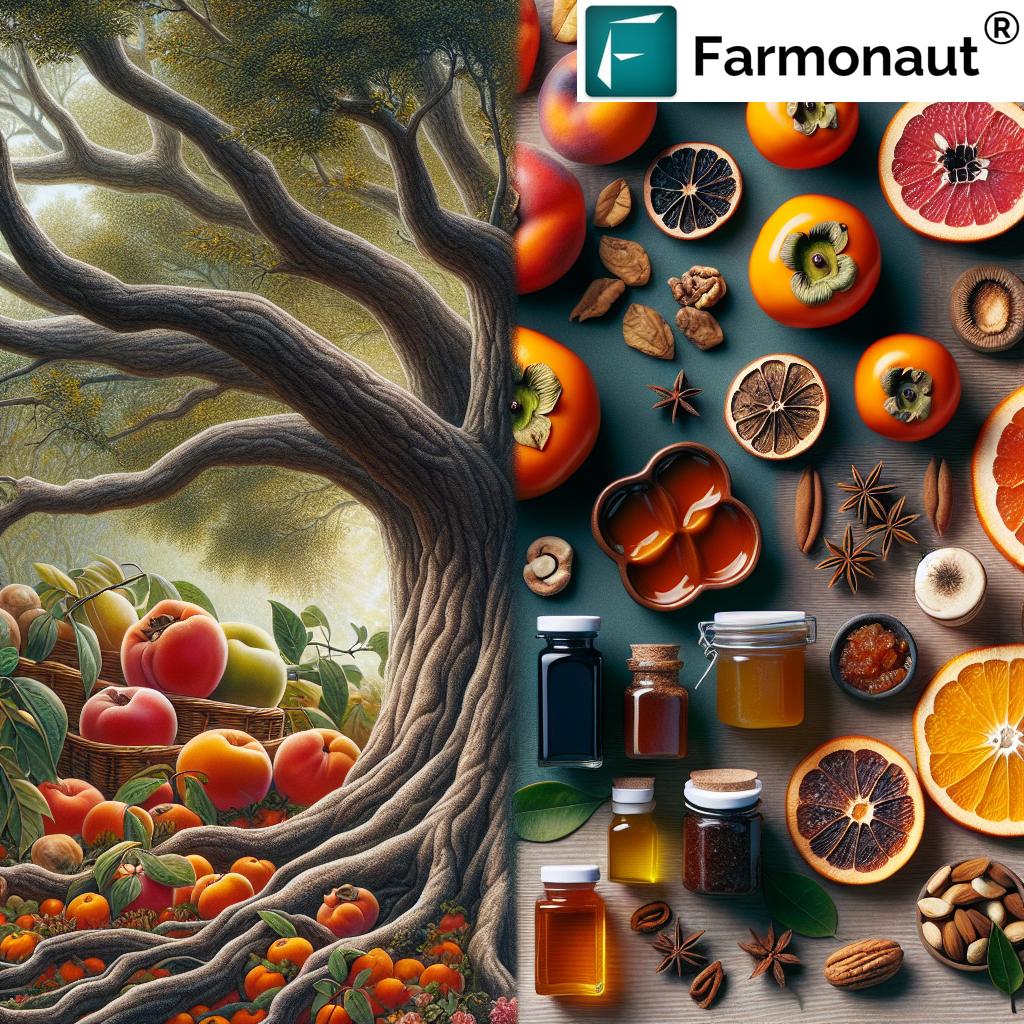
Explore Farmonaut’s Agricultural Solutions
As we’ve discussed the potential of the American persimmon in Maryland’s agricultural landscape, it’s clear that modern farming technologies can play a crucial role in maximizing this opportunity. Farmonaut offers a range of solutions designed to support farmers in their cultivation efforts, whether they’re growing traditional crops or exploring new options like persimmons.
To learn more about how Farmonaut can help you optimize your farming operations, check out our comprehensive suite of tools:
For developers and businesses looking to integrate Farmonaut’s powerful satellite and weather data into their own applications, explore our API and API Developer Docs.
Join the Farmonaut Community
Earn With Farmonaut: Affiliate Program
Join our affiliate program and earn a 20% recurring commission by sharing your promo code and helping farmers save 10%. Onboard 10 Elite farmers monthly to earn a minimum of $148,000 annually—start now and grow your income!
Farmonaut Subscriptions
By leveraging Farmonaut’s advanced agricultural technologies and joining our community, you can be at the forefront of innovative farming practices, whether you’re cultivating American persimmons or any other crop. Together, we can build a more sustainable and prosperous future for agriculture in Maryland and beyond.




